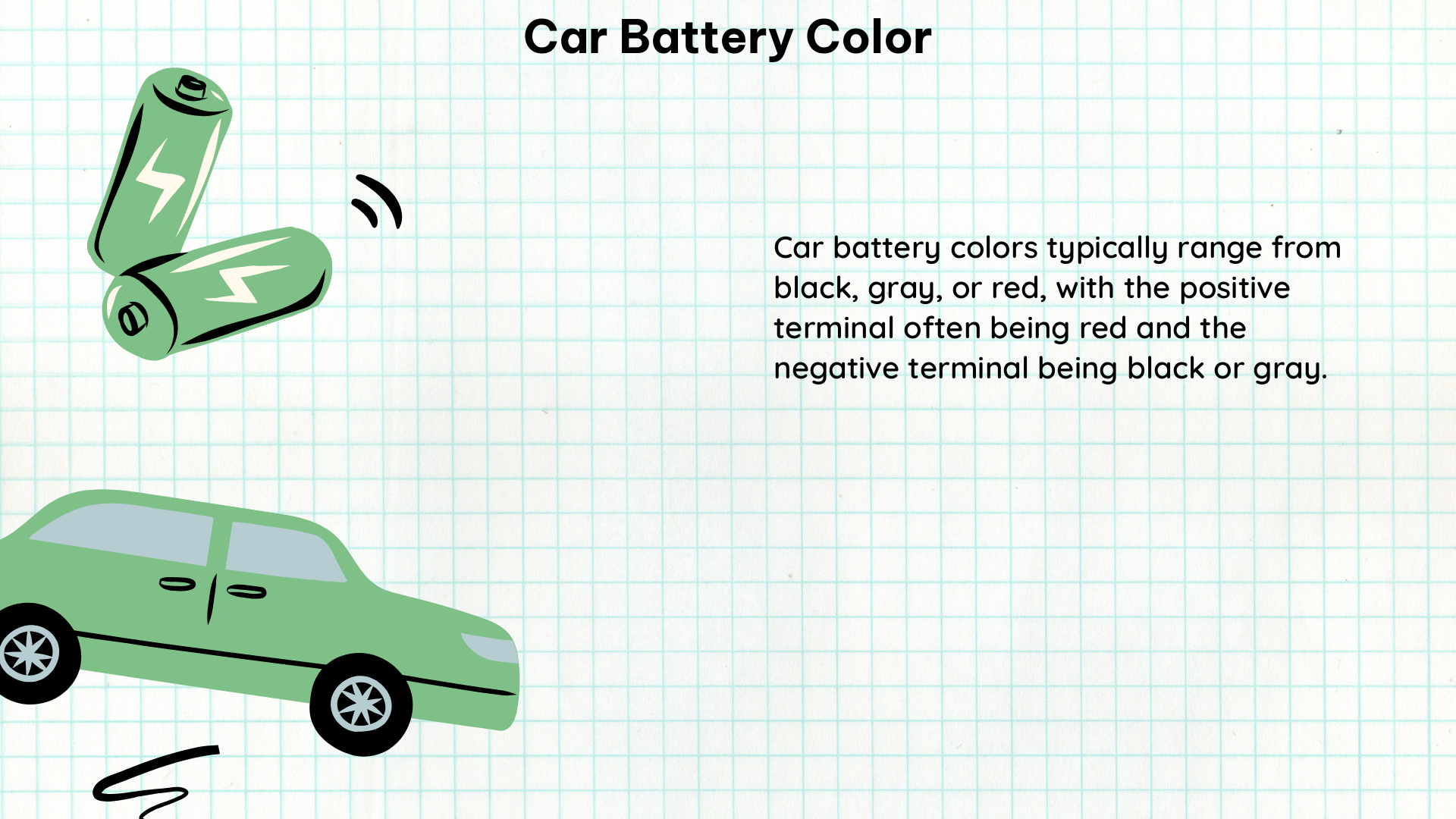The color of your car battery is a crucial indicator of its state of charge and overall health. Understanding the meaning behind these color cues can help you proactively maintain your vehicle’s electrical system and avoid unexpected breakdowns. In this comprehensive guide, we’ll delve into the various car battery colors and their significance, equipping you with the knowledge to make informed decisions about your battery’s condition.
Electrolyte Color: Revealing the Battery’s State of Charge
The color of the battery’s electrolyte, the liquid inside the battery, can provide valuable insights into its state of charge. According to a study published in the ScienceDirect journal, the following electrolyte color patterns can be observed:
| Electrolyte Color | State of Charge |
|---|---|
| Dark-colored | Fully charged |
| Light-colored | Capacity fade |
A fully charged battery will typically have a dark-colored electrolyte, indicating a high level of charge. Conversely, a battery with a lighter-colored electrolyte may be experiencing capacity fade, meaning it has lost some of its ability to hold a charge.
This information is particularly useful for owners of electric vehicles (EVs), as it can help them understand the remaining life of their battery pack. The study also discusses the potential for repurposing retired EV batteries for second-life applications, such as energy storage systems, further extending the battery’s useful lifespan.
Battery Status Indicator: Decoding the Color Signals

Many modern cars are equipped with a battery status indicator, which displays the battery’s condition through a color-coded system. Understanding the meaning behind these color signals can help you take appropriate action to maintain your battery’s health. According to a post on the Mechanics Stack Exchange forum, the following color codes are commonly used:
- Green: Fully charged battery
- White: Battery needs charging
- Red: Battery requires servicing
However, it’s important to note that the accuracy of these indicators has been questioned, as a fully charged battery can sometimes display a white color, potentially leading to confusion.
Terminal Color Coding: Identifying Positive and Negative
The color coding of the battery terminals is another important factor to consider. As explained on the CarParts.com website, the positive terminal is typically red, while the negative terminal is black. Correctly identifying and connecting the terminals is crucial when jump-starting a vehicle or performing other battery-related tasks to avoid potential damage to the electrical system.
Battery Indicator Light: Interpreting the Color Signals
Some car batteries feature an integrated indicator light that displays the battery’s condition. According to a discussion on Reddit, the following color codes are commonly used:
- Black: Battery needs charging
- Green: Battery is in good health
However, it’s worth noting that the reliability of these indicators can vary, as a user in the Reddit thread mentioned a video where the color on the indicator changed, suggesting a potential issue with the battery.
Factors Affecting Battery Color
The color of a car battery can be influenced by various factors, including:
- Age and Wear: As a battery ages and experiences wear, the electrolyte color may change, indicating a decline in the battery’s capacity.
- Charging Cycles: The number of charging cycles a battery has undergone can also affect its color, with more frequent charging leading to a darker electrolyte.
- Environmental Conditions: Extreme temperatures, both hot and cold, can impact the battery’s color and performance.
- Maintenance and Cleaning: Regular maintenance, such as cleaning the battery terminals, can help maintain the battery’s appearance and functionality.
Maintaining Battery Health: Best Practices
To ensure the longevity and optimal performance of your car battery, consider the following best practices:
- Regular Inspections: Periodically check the battery’s color and appearance to identify any signs of deterioration or issues.
- Proper Charging: Follow the manufacturer’s recommendations for charging your battery, ensuring it is charged to the appropriate level.
- Terminal Maintenance: Keep the battery terminals clean and free from corrosion to maintain a strong electrical connection.
- Temperature Control: Protect your battery from extreme temperatures, as both heat and cold can negatively impact its performance.
- Replacement Timing: Replace your battery when it reaches the end of its lifespan, as indicated by a significant change in color or performance.
By understanding the meaning behind the various car battery colors and following these best practices, you can proactively maintain your vehicle’s electrical system and avoid unexpected breakdowns.
Conclusion
The color of your car battery is a valuable indicator of its state of charge and overall health. By familiarizing yourself with the different color cues and their significance, you can make informed decisions about your battery’s condition and take the necessary steps to ensure its longevity. Remember, regular maintenance and vigilance are key to keeping your vehicle’s electrical system running smoothly.
References:
- ScienceDirect – End-of-life or second-life options for retired electric vehicle batteries
- Mechanics Stack Exchange – Battery status indicator confusion?
- CarParts.com – How to Tell Positive and Negative Terminals on a Car Battery
- Reddit – What do this Car battery color ingicator means

The lambdageeks.com Core SME Team is a group of experienced subject matter experts from diverse scientific and technical fields including Physics, Chemistry, Technology,Electronics & Electrical Engineering, Automotive, Mechanical Engineering. Our team collaborates to create high-quality, well-researched articles on a wide range of science and technology topics for the lambdageeks.com website.
All Our Senior SME are having more than 7 Years of experience in the respective fields . They are either Working Industry Professionals or assocaited With different Universities. Refer Our Authors Page to get to know About our Core SMEs.